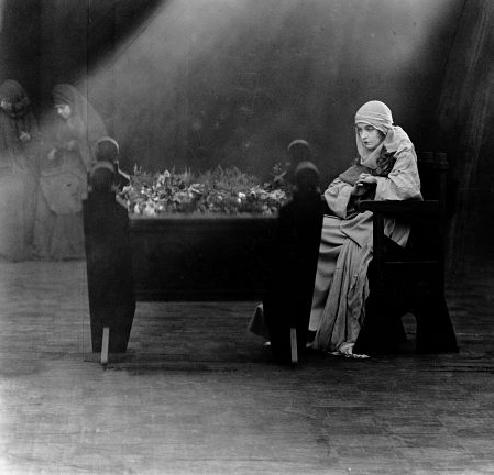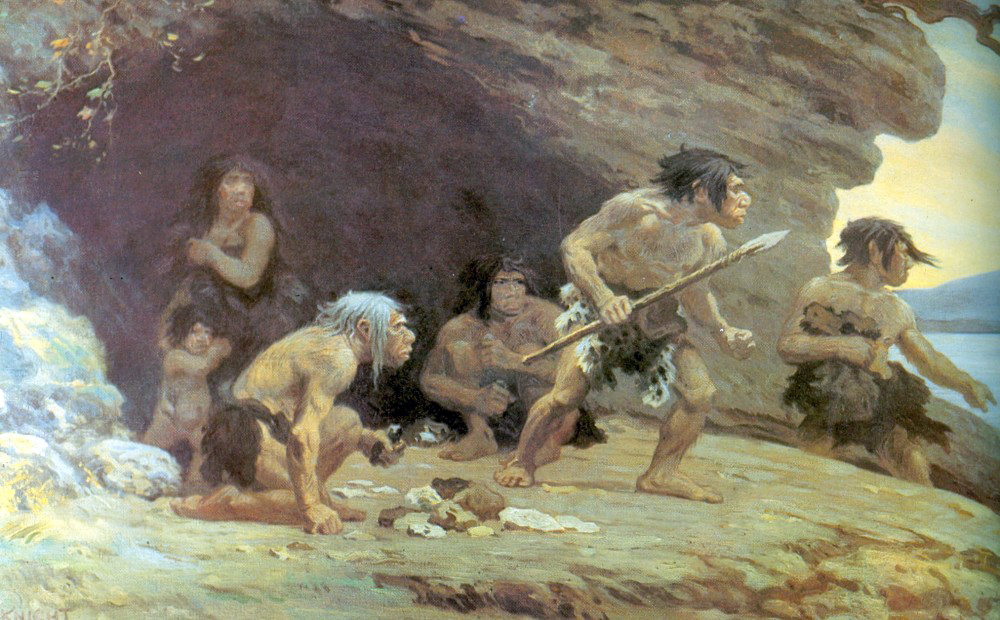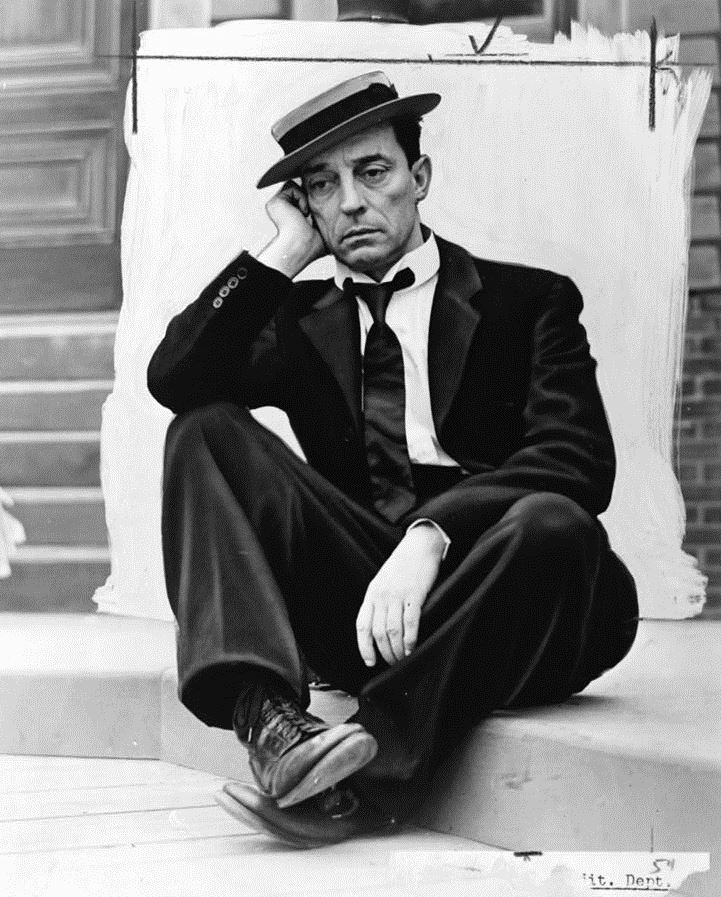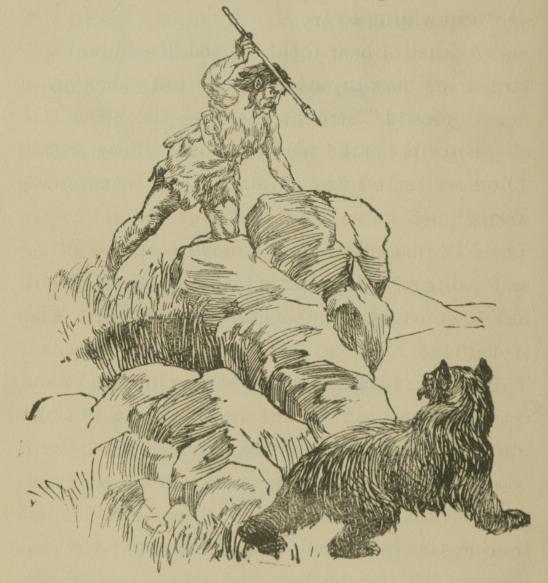|
Three Ages
''Three Ages'' is a 1923 black-and-white American feature-length silent comedy film starring comedian Buster Keaton and Wallace Beery. The first feature Keaton wrote, directed, produced, and starred in (unlike ''The Saphead'', in which he only acted), Keaton structured the film like three inter-cut short films. While Keaton was a proven success in the short film medium, he had yet to prove himself as a feature-length star. Had the project flopped, the film would have been broken into three short films, each covering one of the ages. The structure also worked as a parody of D. W. Griffith's 1916 film ''Intolerance''. Plot Three plots in three different historical periods—prehistoric times, Ancient Rome, and modern times (the Roaring Twenties)—are intercut to prove the point that man's love for woman has not significantly changed throughout history. In all three plots, characters played by the small and slight Buster Keaton and handsome bruiser Wallace Beery compete for th ... [...More Info...] [...Related Items...] OR: [Wikipedia] [Google] [Baidu] |
Buster Keaton
Joseph Frank "Buster" Keaton (October 4, 1895 – February 1, 1966) was an American actor, comedian, and filmmaker. He is best known for his silent film work, in which his trademark was physical comedy accompanied by a stoic, deadpan expression that earned him the nickname "The Great Stone Face". Critic Roger Ebert wrote of Keaton's "extraordinary period from 1920 to 1929" when he "worked without interruption" as having made him "the greatest actor-director in the history of the movies". In 1996, ''Entertainment Weekly'' recognized Keaton as the seventh-greatest film director, and in 1999 the American Film Institute ranked him as the 21st-greatest male star of classic Hollywood cinema. Working with independent producer Joseph M. Schenck and filmmaker Edward F. Cline, Keaton made a series of successful two-reel comedies in the early 1920s, including ''One Week'' (1920), '' The Playhouse'' (1921), '' Cops'' (1922), and ''The Electric House'' (1922). He then moved to feature-leng ... [...More Info...] [...Related Items...] OR: [Wikipedia] [Google] [Baidu] |
Intolerance (film)
''Intolerance'' is a 1916 epic silent film directed by D. W. Griffith. Subtitles include ''Love's Struggle Throughout the Ages'' and ''A Sun-Play of the Ages''.Internet Archive foIntolerance (1916), D. W. Griffith. Retrieved May 21, 2016. Regarded as one of the most influential films of the silent era (though it received mixed reviews at the time), the three-and-a-half-hour epic intercuts four parallel storylines, each separated by several centuries: first, a contemporary melodrama of crime and redemption; second, a Judean story: Christ's mission and death; third, a French story: the events surrounding the St. Bartholomew's Day massacre of 1572; and fourth, a Babylonian story: the fall of the Babylonian Empire to Persia in 539 BC. Each story had its own distinctive color tint in the original print. The scenes are linked by shots of a figure representing Eternal Motherhood, rocking a cradle. Griffith chose to explore the theme of intolerance partly in response to his previous ... [...More Info...] [...Related Items...] OR: [Wikipedia] [Google] [Baidu] |
Caveman
The caveman is a stock character representative of primitive humans in the Paleolithic. The popularization of the type dates to the early 20th century, when Neanderthals were influentially described as " simian" or "ape-like" by Marcellin Boule and Arthur Keith. The term "caveman" has its taxonomic equivalent in the now-obsolete binomial classification of '' Homo troglodytes'' (Linnaeus, 1758). Characteristics Cavemen are typically portrayed as wearing shaggy animal hides, and capable of cave painting like behaviorally modern humans of the last glacial period. They are often shown armed with rocks, cattle bone clubs, spears, or sticks with rocks tied to them, and are portrayed as unintelligent, easily frightened, and aggressive. Popular culture also frequently represents cavemen as living with, or alongside, dinosaurs, even though non-avian dinosaurs became extinct at the end of the Cretaceous period, 66 million years before the emergence of the ''Homo sapiens'' sp ... [...More Info...] [...Related Items...] OR: [Wikipedia] [Google] [Baidu] |
Anachronism
An anachronism (from the Ancient Greek, Greek , 'against' and , 'time') is a chronology, chronological inconsistency in some arrangement, especially a juxtaposition of people, events, objects, language terms and customs from different time periods. The most common type of anachronism is an object misplaced in time, but it may be a verbal expression, a technology, a philosophical idea, a musical style, a material, a plant or animal, a custom, or anything else associated with a particular period that is placed outside its proper temporal domain. (An example of that would be films including non-avian dinosaurs and prehistoric human beings living side by side, but they were, in reality, millions of years apart.) An anachronism may be either intentional or unintentional. Intentional anachronisms may be introduced into a literary or artistic work to help a contemporary audience engage more readily with a historical period. Anachronism can also be used intentionally for purposes of rh ... [...More Info...] [...Related Items...] OR: [Wikipedia] [Google] [Baidu] |
Buster Keaton Filmography
This is a list of films by the American actor, comedian, and filmmaker Buster Keaton. Short films Starring Roscoe Arbuckle, featuring Buster Keaton Starring Buster Keaton under Buster Keaton Productions Starring Buster Keaton for Educational Pictures Starring Buster Keaton for Columbia Pictures Starring Buster Keaton for independent producers Directed by (but not featuring) Buster Keaton for Metro-Goldwyn-Mayer With Buster Keaton in featured or cameo roles Feature films Starring Buster Keaton for Metro Pictures Starring Buster Keaton under Buster Keaton Productions Starring Buster Keaton for Metro-Goldwyn-Mayer Starring Buster Keaton for independent producers With Buster Keaton in featured or cameo roles Television appearances (incomplete) * ''The Ed Wynn Show'', (1949) as Buster * ''The Buster Keaton Show'', KKTV (1950) as Buster * ''Life with Buster Keaton'', KKTV (1951) as Buster * ''Douglas Fairbanks Presents' ... [...More Info...] [...Related Items...] OR: [Wikipedia] [Google] [Baidu] |
Raymond Rohauer
Raymond Rohauer (1924, Buffalo, New York – November 10, 1987) was an American film collector and distributor. Early life and career Rohauer moved to California in 1942 and was educated at Los Angeles City College. Rohauer made a five-reel 16mm experimental film ''Whirlpool'' (1947) which was not successful. He subsequently became active in film exhibition at the Coronet Theatre from 1950, which was, according to William K. Everson, a "bizarre combination of art house, film society and exploitation cinema". Films shown at the Coronet were generally copied illicitly, occasionally to the irritation of the Museum of Modern Art (MoMA) in New York City because Rohauer often neglected to remove identifying features present in their prints. in 1954, Rohauer met Buster Keaton and his wife, Eleanor; the couple would develop a business partnership with him to rerelease Keaton's films. The Coronet Theatre art house in Los Angeles, with which Rohauer was involved, was showing '' The G ... [...More Info...] [...Related Items...] OR: [Wikipedia] [Google] [Baidu] |
Photoplay
''Photoplay'' was one of the first American film (another name for ''photoplay'') fan magazines. It was founded in 1911 in Chicago, the same year that J. Stuart Blackton founded '' Motion Picture Story,'' a magazine also directed at fans. For most of its run, ''Photoplay'' was published by Macfadden Publications. In 1921 ''Photoplay'' established what is considered the first significant annual movie award. The magazine ceased publication in 1980. History ''Photoplay'' began as a short fiction magazine concerned mostly with the plots and characters of films at the time and was used as a promotional tool for those films. In 1915, Julian Johnson and James R. Quirk became the editors (though Quirk had been vice president of the magazine since its inception), and together they created a format which would set a precedent for almost all celebrity magazines that followed. By 1918 the circulation exceeded 200,000, with the popularity of the magazine fueled by the public's increasing inte ... [...More Info...] [...Related Items...] OR: [Wikipedia] [Google] [Baidu] |
Robert E
The name Robert is an ancient Germanic given name, from Proto-Germanic "fame" and "bright" (''Hrōþiberhtaz''). Compare Old Dutch ''Robrecht'' and Old High German ''Hrodebert'' (a compound of '' Hruod'' ( non, Hróðr) "fame, glory, honour, praise, renown" and ''berht'' "bright, light, shining"). It is the second most frequently used given name of ancient Germanic origin. It is also in use as a surname. Another commonly used form of the name is Rupert. After becoming widely used in Continental Europe it entered England in its Old French form ''Robert'', where an Old English cognate form (''Hrēodbēorht'', ''Hrodberht'', ''Hrēodbēorð'', ''Hrœdbœrð'', ''Hrœdberð'', ''Hrōðberχtŕ'') had existed before the Norman Conquest. The feminine version is Roberta. The Italian, Portuguese, and Spanish form is Roberto. Robert is also a common name in many Germanic languages, including English, German, Dutch, Norwegian, Swedish, Scots, Danish, and Icelandic. It can be use ... [...More Info...] [...Related Items...] OR: [Wikipedia] [Google] [Baidu] |
Life (magazine)
''Life'' was an American magazine published weekly from 1883 to 1972, as an intermittent "special" until 1978, and as a monthly from 1978 until 2000. During its golden age from 1936 to 1972, ''Life'' was a wide-ranging weekly general-interest magazine known for the quality of its photography, and was one of the most popular magazines in the nation, regularly reaching one-quarter of the population. ''Life'' was independently published for its first 53 years until 1936 as a general-interest and light entertainment magazine, heavy on illustrations, jokes, and social commentary. It featured some of the most notable writers, editors, illustrators and cartoonists of its time: Charles Dana Gibson, Norman Rockwell and Jacob Hartman Jr. Gibson became the editor and owner of the magazine after John Ames Mitchell died in 1918. During its later years, the magazine offered brief capsule reviews (similar to those in ''The New Yorker'') of plays and movies currently running in New York City, bu ... [...More Info...] [...Related Items...] OR: [Wikipedia] [Google] [Baidu] |
Kewpie Morgan
Kewpie Morgan (born Horace Allen Morgan, February 1, 1892 – September 24, 1956) was an American silent film comedian who also performed in a few early sound films. He appeared in 99 films from 1915 to 1936. He appeared in the films of such comedians as Buster Keaton and Laurel and Hardy. He posthumously appeared in Robert Youngson compilations of the 1960s highlighting silent film comedy. Before he became an actor, Morgan was an electrician at a film studio. He sometimes returned to that job when acting opportunities were not available. Partial filmography *'' The Border Legion'' (1918) *'' The Cup of Fury'' (1920) *'' Merely Mary Ann'' (1920) *''Drag Harlan'' (1920) *''The Scuttlers'' (1920) *''A Small Town Idol'' (1921) *''Three Ages'' (1923) *''Sherlock Jr.'' (1924) *'' Stupid, But Brave'' (1924) *''Butter Fingers'' (1925) *''The Better 'Ole'' (1926) *'' Spuds'' (1927) * ''Finnegan's Ball'' (1927) *'' Flying Luck'' (1927) *''Beggars of Life'' (1928) *''The Spieler'' (1928) * ... [...More Info...] [...Related Items...] OR: [Wikipedia] [Google] [Baidu] |
Caveman
The caveman is a stock character representative of primitive humans in the Paleolithic. The popularization of the type dates to the early 20th century, when Neanderthals were influentially described as " simian" or "ape-like" by Marcellin Boule and Arthur Keith. The term "caveman" has its taxonomic equivalent in the now-obsolete binomial classification of '' Homo troglodytes'' (Linnaeus, 1758). Characteristics Cavemen are typically portrayed as wearing shaggy animal hides, and capable of cave painting like behaviorally modern humans of the last glacial period. They are often shown armed with rocks, cattle bone clubs, spears, or sticks with rocks tied to them, and are portrayed as unintelligent, easily frightened, and aggressive. Popular culture also frequently represents cavemen as living with, or alongside, dinosaurs, even though non-avian dinosaurs became extinct at the end of the Cretaceous period, 66 million years before the emergence of the ''Homo sapiens'' sp ... [...More Info...] [...Related Items...] OR: [Wikipedia] [Google] [Baidu] |
Stone Age
The Stone Age was a broad prehistoric period during which stone was widely used to make tools with an edge, a point, or a percussion surface. The period lasted for roughly 3.4 million years, and ended between 4,000 BC and 2,000 BC, with the advent of metalworking. Though some simple metalworking of malleable metals, particularly the use of gold and copper for purposes of ornamentation, was known in the Stone Age, it is the melting and smelting of copper that marks the end of the Stone Age. In Western Asia, this occurred by about 3,000 BC, when bronze became widespread. The term Bronze Age is used to describe the period that followed the Stone Age, as well as to describe cultures that had developed techniques and technologies for working copper alloys (bronze: originally copper and arsenic, later copper and tin) into tools, supplanting stone in many uses. Stone Age artifacts that have been discovered include tools used by modern humans, by their predecessor species in the ... [...More Info...] [...Related Items...] OR: [Wikipedia] [Google] [Baidu] |








